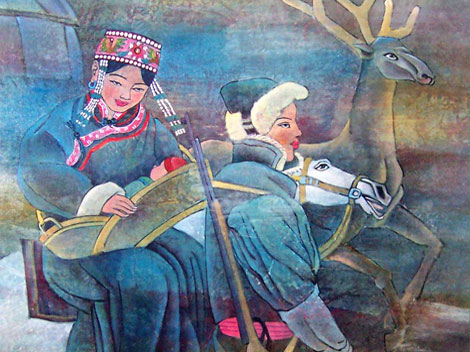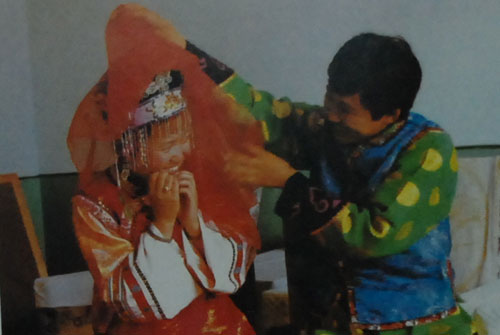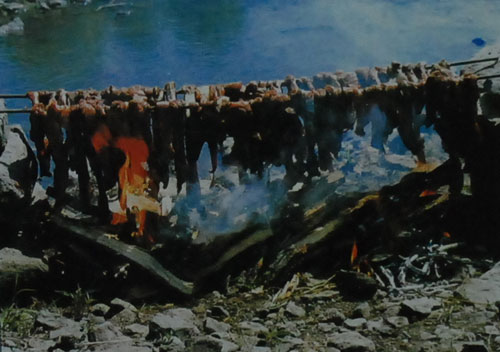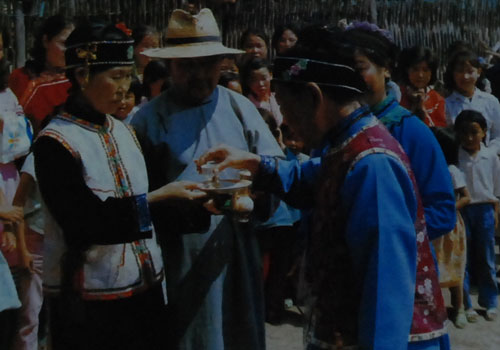
The Daurs, with a population of 121.357, mainly live in Morin Dawa Daur Autonomous Banner, and Ewemki Autonomous Banner of Inner Mongolia, Qiqihar City of Heilongjiang Province and Tacheng of Xinjiang. The Daurs, as they call themselves, make their homes by the fertile and beautiful Nenjiang River farming, herding animals, fishing as well as hunting.

A Daur wedding. Here the bridegroom lifts the veil of his bride happily.
The Daur language, containing the Butha, Qiqihar and Xinjiang dialects, belongs to the Mongolian language group of the Altaic family. As the Daurs have come into close contact with other peoples for a fairly long time, most Daurs have a good command of Chinese, Mongolian, Uigur, Kazak and Ewenki languages.

Making dry beef for later use.
In the past years, the name of Daur was translated as "Dahur" or "Dagur". The word "Daur" firstly appeared in the early years of the Ming Dynasty. Historical records show that the Daurs are descendants of the Khitan tribe of the Liao Dynasty because of the common language, customs, habits and geographic distribution.

At a Daur wedding, the groom's parents welcome the bride's relatives by toasting each of than twice at the doorstep





